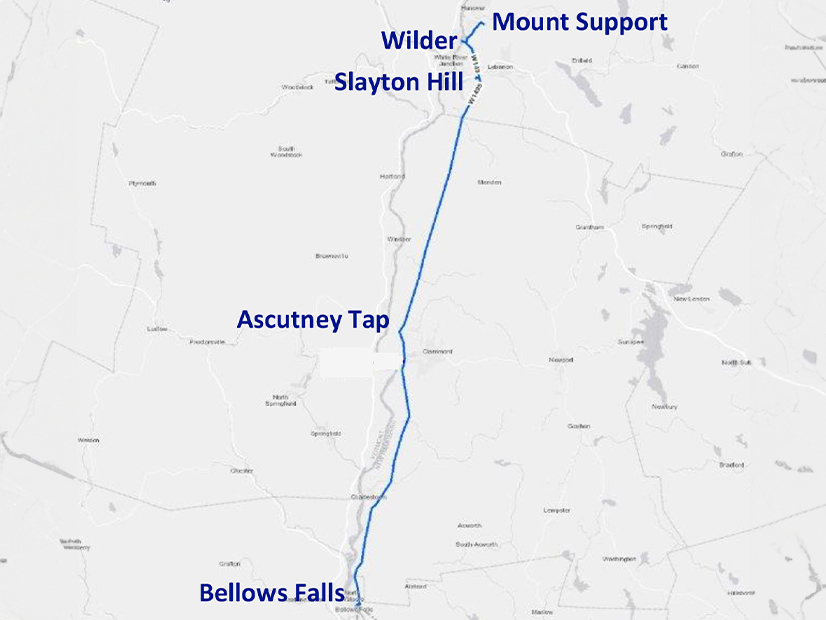
National Grid introduced a pair of asset condition projects estimated to cost about $538 million to the ISO-NE Planning Advisory Committee.
National Grid introduced a pair of asset condition projects estimated to cost about $538 million at the ISO-NE Planning Advisory Committee on May 15.
The bulk of the cost, $491 million, would come from the refurbishment of a 115-kV line along the Vermont-New Hampshire border. The project would consist of replacing wood structures with steel poles, installing optical ground wire and moving part of the line toward center of the right of way to reduce tree damage.
The line was refurbished in 2008 but has since deteriorated because of damage from woodpeckers and exposure to the elements, said Rafael Panos of National Grid.
Some stakeholders expressed concern about the high cost of the project and the short lifespan of the previous refurbishment.
Abigail Krich, president of Boreas Renewables, asked whether National Grid has considered whether the line overlaps with needs identified in ISO-NE’s 2050 Transmission Study. The study identified the North-South interface along the southern borders of Vermont and New Hampshire as a high-likelihood area for overloads in coming decades.
“The region is planning to have conversations very soon about right-sizing projects like this one,” Krich said. “This is a really big project, and I’d hate to miss that opportunity.”
Panos agreed regarding the importance of avoiding a “subsequent rebuild” and said he would consult with the National Grid team about a potential overlap with the needs identified in the 2050 study.
Asset Condition Process Guide
Dave Burnham of Eversource Energy gave an overview of the draft asset condition process guide that was developed jointly by the New England transmission owners (NETOs).
The guide outlines how the NETOs monitor their assets, identify asset condition needs and select solutions. The document comes in response to requests from the New England states for more transparency and oversight on the asset condition process. (See States Press New England TOs on Asset Condition Projects.)
Burnham requested stakeholder feedback on the draft by May 29.
FERC Order 881
Brent Oberlin, executive director of transmission planning at ISO-NE, presented on how FERC Order 881 compliance will affect transmission planning. The order requires transmission providers to use ambient-adjusted line ratings to evaluate short-term transmission service and seasonal ratings for long-term service.
Oberlin noted the order does not require any changes to the ratings used in transmission planning but said ISO-NE intends to update its winter ambient temperature assumptions.
While ISO-NE’s winter planning assumes an ambient temperature of 50 degrees Fahrenheit, winter peak loads typically occur as the temperature drops, a trend that will increase with heating electrification, Oberlin said. To account for this, ISO-NE plans to assume 20 F for transmission planning.
Oberlin emphasized that ISO-NE has a lot of work to do to be ready for the July 2025 implementation date.
“We’re going to be coming in on two wheels to actually get this done,” he said.


